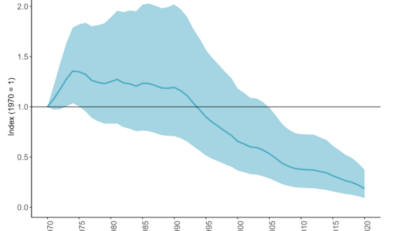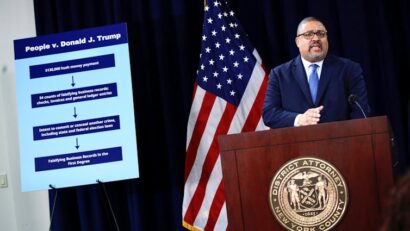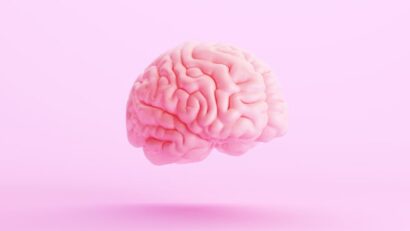
Kakapåkaka kaka
En ny klassiker kan man kalla det. Jag tog två kakor och slog ihop till en. I botten är det mördeg och ovanpå en havrekaka. Det blev en av mina favoritkakor. Lätta att göra är de också. Recept Ugnstemperatur 175 Läs mer…
Nyheter och länkar - en bra startsida helt enkelt |Oculus lyx vitae

En ny klassiker kan man kalla det. Jag tog två kakor och slog ihop till en. I botten är det mördeg och ovanpå en havrekaka. Det blev en av mina favoritkakor. Lätta att göra är de också. Recept Ugnstemperatur 175 Läs mer…
1 § Om det i ett mål eller ärende är fråga om tillstånd till
vattenverksamhet vars tillåtlighet enligt Kammarkollegiet,
Havs- och vattenmyndigheten eller länsstyrelsen bör prövas av
regeringen enligt 17 kap. 3 § miljöbalken, ska myndigheten i
god tid 1998-11-05

Housing remains one of Australia’s most pressing issues in both state and federal politics. The RBA keeping rates up and high mortgage repayments have left many Australians struggling. For those Australians who don’t own a home, it’s becoming increasingly hard to get into the housing market.
The opposition has blamed the high levels of migration for why Australians feel so much housing pain. Peter Dutton has promised to reduce the permanent migration program (which brings in many skilled workers) as part of getting net overseas migration down. He says more than 100,000 homes could be freed up over five years.
To discuss the oppositions plan, we’re joined by Shadow Assistant Minister for Home Ownership Senator Andrew Bragg.
Andrew Bragg explains why the coalition sees migration as a critical issue when it comes to housing supply.
Ultimately, you need to get the ratios back into whack. Now, just five years ago, you had a situation where you were bringing 260,000 people in and building over 200,000 houses. In the last year you’re having 600,000 people come in the country, but you’re only building 170,000 houses. So, you have to calibrate the ratios.
When it comes to the actual building of new homes Bragg sees problems at state level, and he has a drastic solution.
The [federal] government’s policy has been to pay the states to build houses. That has not worked, and I think we need to go one step further and look at coercion. We can’t fund the local governments directly because there’s a constitutional issue, but we do need to look at how we can fund states or not fund states.
There are councils like Camden, Liverpool, Campbelltown. They all want to build houses, they want the density. But in some cases it takes them two years to get the water turned on. So while the state premier might be supporting development, the agencies are dragging the chain. So I think coercion is probably the most likely step.
Finally, on Women in the Liberal party, Bragg lays out the direction he sees for the party:
In terms of the selection of women, it is true that we have far too few in the House of Representatives, and that is something that the members ultimately need to fix. We’re not a command and control party. Now, the members will make their own judgements about who they want, and we need to encourage the members to consider these factors because we need to be a party that looks like modern Australia. Läs mer…

Louisiana’s Legislature approved a bill on May 23, 2024, that would reclassify two abortion pills, mifepristone and misoprostol, as “controlled, dangerous substances.” Both pills have a long history of safe and effective use in medication abortions as well as for treatment of miscarriages and other conditions. The bill, which is expected to be signed into law by the state’s governor, makes it illegal to possess either of the pills without a prescription. Surgical and medication abortions are already banned in Louisiana, with few exceptions.
The Conversation U.S. asked twin sisters Jamie Rowen, a legal scholar, and Tami Rowen, an obstetrician and gynecologist, to explain the new law’s implications – both for patients and providers.
What does Louisiana’s law mean for these abortion pills?
Mifepristone and misoprostol have long been classified as noncontrolled substances. Though a prescription is required in order to obtain them, there have been no criminal consequences for possessing these medications.
Louisiana’s new bill, once signed, would reclassify the pills as Schedule 4 drugs, which includes medications such as diazepam, more commonly known as valium, and tramadol, a commonly used opioid.
In the U.S., prescription medications are divided into two categories: not controlled and controlled. These are based on the drug’s likelihood for mental and physical addiction. Louisiana just moved the two medications from not controlled to controlled.
Access to medication abortion already requires a prescription everywhere in the U.S. So people seeking abortions will still need to get a prescription to obtain the pills under Louisiana’s new law, just as before.
What this law primarily does is make it a crime for people who are not seeking abortions to possess the pills. In Louisiana, it is against the law to provide a medical or surgical abortion absent the threat of a woman’s death or “substantial and irreversible bodily impairment.” Louisiana residents seeking medication abortion must get the pills from out of state. Under this new law, if someone without a valid prescription transports or stores mifepristone or misoprostol in Louisiana, they may face a penalty of between one and five years in prison and up to US$5,000 in fines.
Controlled substances are further categorized by schedules. Under federal law, schedule designations are determined by a drug’s potential for abuse, its risk to public health and a few other factors.
Under Louisiana state law, there are five schedules that follow similar categorizations as federal law. A Schedule 4 classification means that the drug or other substance has a low potential for abuse, has a currently accepted medical use, and that abuse of the drug or other substance may lead to limited physical dependence or psychological dependence.
By classifying mifepristone and misoprostol as a controlled Schedule 4 drug, the legislature is asserting without evidence that there are dependence and abuse risks associated with taking the medication.
Hundreds of doctors in Louisiana say that the new bill could make it much harder for them to obtain the pills for maternal care in a state that already has some of the highest maternal mortality rates in the U.S.
What science, if any, did the Legislature rely on?
This is the first time that a state has classified abortion medication as a controlled substance, but it is not an unprecedented classification of abortion medication as a Schedule 4 drug.
Taiwan similarly classifies mifepristone this way.
The classification has no science behind it, however, as no studies suggest that the drug poses any risk of dependence or abuse. Mifepristone can be used for elective abortion, miscarriage management and even for labor induction, being more effective than traditional treatments with misoprostol alone.
In terms of safety, it is useful to compare the risks of mifepristone with another commonly used drug, Viagra. Though requiring a prescription, Viagra is not classified as a controlled substance. For mifepristone, there are rare reported cases of nonspecific fatal sepsis that could be related to women undergoing medical abortion in the U.S.
In contrast, Viagra was linked to 1,473 major adverse outcomes and 522 reported deaths in the U.S. during a 13-month period. The legislative history in Louisiana does not explain the science behind its classification scheme.
It should be noted that there is no risk of dependence from either misoprostol or mifepristone. Misoprostol was approved by the Food and Drug Administration for its ability to lessen the symptoms of gastric ulcers but is widely used throughout obstetrics and gynecology for inducing labor and stopping postpartum hemorrhage. Side effects for those using misoprostol for ulcers or gynecological care are rare, particularly compared with other Schedule 4 drugs.
Abortion rights activists have been protesting efforts at the state and federal level to restrict access to abortion pills like mifepristone.
AP Photo/Jose Luis Magana
How could the new law affect access for nonabortion procedures?
According to the new law, the criminal penalties of up to five years in prison can be imposed regardless of whether the pills are designated for a person electing abortion or trying to complete a miscarriage. In addition, the law does not distinguish between the possession of misoprostol for the treatment of gastric ulcers or gynecological care.
By punishing people who are transporting or storing the medications for others, the law may create new barriers to access for a variety of people, even if it doesn’t criminalize pregnant people who consume the pills.
What are the implications of the laws for other states?
The Supreme Court has interpreted the Constitution as allowing both the federal government and the states to regulate controlled substances. This means there can be variations in access to medications state to state.
However, states typically follow federal scheduling guidelines and practices when making their own drug classifications. A well-known but rare exception to this common practice is cannabis, which many states have decriminalized or legalized contrary to federal law.
The immediate impacts will be on clinical studies on the two drugs in other states that have patients in Louisiana. Clinical trials with medications that are not controlled substances may be conducted in any state with little or no added state regulation. Clinical trials of controlled substances have additional regulatory requirements that can add costs and delay development.
The most likely long-term outcome is that other states may make similar legislative attempts to curb access to medication abortion, particularly in states that have unsuccessfully tried to stop access to medical abortion in other ways. Läs mer…

The announcement of July 4 for the UK general election took many by surprise. A key question is why it was called then when it did not have to be? The decision to call an election is always a gamble – there is perhaps no right time – and many factors feed into that call.
Legally, a general election had to be called in 2024. Behind the scenes, those in Number 10 will have been modelling when the vote should be held with the help of key economic indicators such as inflation and gross domestic product (GDP), as well as analysing the polls and speaking to focus groups.
In the UK, the power to request a dissolution of parliament and call an election lies with the prime minister. The party in power uses a process known as “evidence-based diagnostics”, in which evidence is collected regarding the state of the UK and analysed alongside voter perceptions, in an attempt to identify the best time – for them – to call an election.
This is complex, as it includes an assessment of the strengths and weaknesses of rival parties, and of independent analyses published by organisations such as the World Bank, the Organisation for Economic Co-operation and Development (OECD), and the International Monetary Fund (IMF). Increasingly, artificial intelligence is applied to sift through these vast amounts of data to spot patterns and make predictions.
Want more general election coverage and analysis from The Conversation’s academic experts?
Sign up for our new, weekly UK politics newsletter, delivered every Friday throughout the campaign and beyond.
Recently, there has been some very good economic news highlighting that Britain is not as broken as politicians or some journalists might like us to believe. The UK inflation rate in April dropped to 2.3%, and GDP was estimated to have grown by 0.6% in the three months to March 2024.
The quest for economic stability
These two indicators played an important role in the decision to call a general election for July 4. It may be that, in terms of the economy, this is the best time for the Conservatives to take the fight to the Labour party, especially as Labour’s offer hinges around the promise of economic stability.
The UK economy has experienced an early recovery from the technical recession it experienced in the second half of 2023. Household incomes have improved and this is bolstering consumer spending. Some of this reflects alterations that were made in the 2023 Autumn Statement, including the four percentage point reduction in National Insurance contributions paid by employees.
In addition, financial markets now assume the Bank of England will begin cutting interest rates in August or September 2024, rather than in June. The anticipated timing of these cuts suggests the government had little to gain by waiting until the autumn to hold this election, because of the lag time between an interest rate cut and its impact.
As such, the Conservative party can claim there is evidence the UK has already reached a time of economic stability that provides a platform for growth. Vote for us, they say, and we’ll build on this work.
Meanwhile, Labour has unveiled its pledge card with six key policies, including economic stability. These are the six initiatives that its analysis will have identified as being most attractive to voters and party members.
Above all, Labour is arguing that now is the time for change. But to argue for change by itself is insufficient. Not all change is desirable and change also tends to disrupt, resulting in uncertainty and instability.
My experience in evidence-based diagnostics leads me to believe that neither party has made best use of this process in identifying the key challenges the UK faces.
In many respects, it is good for countries to experience regular changes in their leadership. Diagnostics to identify the most important challenges to tackle should be central to this, but politics – that is, the effort to please voters – will dominate this and many more general elections. There is a tension in all countries between the interests and needs of citizens as identified by the evidence, compared with the desires of politicians to form the next government.
Voters will hope the next UK government can rise to the challenge and ensure both economic growth and national security. But they might feel more confident if UK political parties looked at policy identification and prioritisation through the same evidence-based lens that informed Rishi Sunak’s choice of July 4 for the election date. Läs mer…

Around the world, free-flowing natural rivers are being fragmented by dams, weirs and other barriers. It’s one of the biggest, yet least acknowledged, causes of biodiversity loss worldwide.
River fragmentation is a key reason migratory fish populations have declined by 81% since 1970, according to a new report by the Living Planet Index – a rate of wildlife loss six times that of animals that live on land or in the sea.
These migratory fish need to move between different parts of rivers, estuaries and oceans at different stages in their lives. For instance salmon go from the sea to rivers or lakes to reproduce, while eels do the opposite.
Some species migrate within large river systems, like the Clanwilliam sandfish which moves from lowland rivers into small headwaters of South Africa’s Cederberg Mountains to spawn. The dorado or Goliath catfish migrates more than 11,000 km from spawning habitats in the high Andes to nursery areas in the Amazon River mouth.
An 80% decline in five decades:
Abundance of 1,864 monitored populations of 284 species of migratory freshwater fishes, indexed to 1970 = 1. Shaded areas represent 95% confidence intervals.
Living Planet Index, CC BY-SA
That’s why it’s crucial to maintain as many free-flowing rivers as possible to allow species and nutrients to pass from upstream headwaters to the floodplains, deltas and estuaries downstream. Yet growing demand for renewable energy means there are at least 3,500 hydropower dams under different stages of development around the world, which, when complete, will nearly double the number of large dams on Earth.
There are already over a million river barriers in Europe alone, and at least 16 million worldwide. Only around a third of the world’s longest rivers remain free flowing and less than a quarter flow uninterrupted into the open ocean. Once the new hydroelectric dams are all completed, 93% of the rivers on Earth are expected to be classified as moderately to severely fragmented.
Unintended consequences
With barriers now blocking their natural routes, no wonder there has been a catastrophic decrease in these migratory freshwater fish. According to the new report, the most alarming losses are in Latin America and the Caribbean, where populations are less than a tenth of what they were in 1970.
This region has a high reliance on hydropower electricity and is threatened by increasing drought risk, but millions of people directly rely on these fish for food, livelihoods and traditional culture. The global thirst for renewable, “clean” electricity might therefore lead to unintended consequences.
While a single dam can cause serious disruptions, barriers act in tandem with other major stressors to cause even more devastating effects. Barriers increase water temperatures, compounding trends driven by climate warming. Warmer water holds less oxygen and puts fish under stress. And then those same barriers make it harder for fish to leave uninhabitable areas for cooler water upstream.
Species which are adapted to fast-flowing, highly oxygenated cool water are overwhelmingly adversely affected and rapidly disappear from rivers impacted by barriers. Dams also trap sediments, which then alters habitats used by fish, as well as making it easier for non-native invasive species to establish.
Down with dams
One river in the US is showing a possible way forward. In an unprecedented operation to rectify the ecological damage caused by damming, six dams along 400 miles of the Klamath River in Oregon are being removed.
The Klamath River will run free, with sections having water flow after being dry for almost 100 years. Migratory salmon and steelhead trout will once again swim freely throughout the river basin, Indigenous communities will have access to traditional fisheries, and water quality will be restored.
There are options short of full dam-removal. In many parts of the world, dam operations are also being modified in attempts to make the water flow more naturally.
It may be possible to remediate some of the catastrophic impact river fragmentation has had on migratory fish species. However, this will depend on major and urgent engineering interventions, that effectively balance the need for water storage in reservoirs with human needs for freshwater biodiversity.
Restoring the Klamath River. Läs mer…

With the UK heading for an election on July 4, it can feel like the result is pre-ordained. Labour has maintained a decisive poll lead for over a year and nothing Rishi Sunak does appears to shift the dial.
But below the surface, much remains at stake in this six-week campaign.
For a start, there is no possible result in this contest that couldn’t be described as monumental. Should Keir Starmer win, he would have pulled off the most astonishing electoral turnaround in living memory and return Labour to power for the first time in 14 years. Should Rishi Sunak win, he’d practically be defying gravity.
In Scotland, the SNP’s dominance could be about to be turned into total wipeout. In Wales, boundary changes have dramatically redrawn the electoral map. In Northern Ireland, the DUP is entering its first truly post-Brexit election in a state of crisis following the arrest of its now-former leader – just as Sinn Féin is surging.
So, Labour’s huge poll lead is really just one part of the story.
Here at The Conversation, a charity, we are dedicated to providing readers with trustworthy, evidence-based journalism. Over the coming weeks, we’ll bring you informed analysis of developments in the campaign and we’ll fact check the claims being made.
Want informed coverage and analysis from The Conversation’s academic experts?
Sign up for our new, weekly election newsletter, delivered every Friday throughout the campaign and beyond.
We will dive deep into manifestos to pull out the promises that matter. All parties need to answer big questions on the future of the NHS and the future of our planet. All have promised change and renewal after a period of great strain. We believe that university scholars with a deep knowledge of their fields are well placed to help the rest of us assess the value of what they are offering on all these issues.
If you value quality political coverage, please join us for this campaign by signing up to our weekly election newsletter, a distillation of the essential information every Friday afternoon. Läs mer…

After more than four weeks of often sordid testimony, accusations of lying and even a warning from Judge Juan M. Merchan to a witness to stop giving him the side-eye, lawyers in the hush-money case involving former President Donald Trump are expected to make their closing arguments on May 28, 2024.
In a jury trial, opening statements are meant to provide jurors a narrative framework to organize all the bits and pieces of evidence and testimony.
Closing arguments are not meant to simply regurgitate the testimonies of all 22 witnesses or review the roughly 200 exhibits. For both prosecutors and defense attorneys, the closing arguments serve to tell the jury why the evidence is believable or not, why and how the facts are linked or not and, most importantly, why their decision to either acquit or convict is moral and just.
Keep it simple
As a I teach law school students and practitioners, that moral message in closing arguments should link back to themes already woven into the trial.
In this criminal case, one of four filed against Trump, Manhattan District Attorney Alvin Bragg charged the former president with
34 counts of falsifying business records to hide a $130,000 payment to porn actress Stormy Daniels as part of an effort to influence voters’ knowledge about him before the 2016 presidential election.
Trump entered a plea of not guilty and did not testify.
For the prosecution, that moral message, as prosecutor Matthew Colangelo said earlier in the trial, is this: “It was election fraud, pure and simple.”
For the defense, its closing argument should include an equally direct statement, much like what Trump defense attorney Todd Blanche has said: “President Trump is innocent. President Trump did not commit any crimes. The Manhattan district attorney’s office should never have brought this case.”
There is at least one more purpose in closing arguments. It is to arm jurors with the arguments they need – either to shut down naysayers or gently persuade those in doubt – for when the real battle occurs, inside the jury room during deliberations. One way to do that is to find language from the instructions the judge will give to the jury, restate them in plain English and, in effect, make it look as if they are aligned with the judge and the law.
Less is more
A major goal of both prosecutors and defense attorneys is to untangle all of the evidence and testimony. They must cut through the distracting details and tell jurors, in effect, “Now you know why this witness was important” or “the document doesn’t lie – it shows you …”
Prosecutors in this case must focus on why Trump was involved in the alleged conspiracy and what he knew about the alleged payments.
Manhattan District Attorney Alvin Bragg speaks during a news conference about former President Donald Trump’s arraignment on April 4, 2023.
Kena Betancur/Getty Images
In my experience over 45 years, the wise path is to start the closing argument with the big picture of “What did we have to prove?” and then answering in a series of bullet points that explain how they proved their case beyond a reasonable doubt.
To this end, a limited and focused use of exhibits is best – not each and every bit of evidence. Less is more also regarding salacious details, the adultery and Trump’s own vulgar words. The jury just needs the reminder – they’ll recall the details.
With star witness Michael Cohen, an attorney and Trump’s former fixer, it may be different. The prosecution can’t hide from his lies and flaws, which Trump’s defense attorneys hammered home to the jury, so it’s up to the prosecution to embrace Cohen’s failures.
Put simply, prosecutors must show that it doesn’t matter how big a liar Cohen has been in his past if, in this case, he has the receipts to back up his testimony.
A reasonable doubt?
For defense attorneys, their goal is to reassert Trump’s innocence and argue that there is plenty of reasonable doubt in the prosecution’s case.
That means pounding away at Cohen’s lack of credibility and denying that any crime was committed. If anything, they may argue, these alleged crimes were no more than bookkeeping errors that Trump didn’t know about.
A courtroom sketch depicts Judge Juan Merchan, Donald Trump, prospective jurors and other court and legal personnel.
Christine Cornell via AP Pool
But if the defense portrays everything as lies, as Trump has claimed, they may paint themselves into a corner. If the jury believes, for example, that Stormy Daniels was telling the truth when she said she had sex with Trump, then Trump’s denials may work against his lawyer’s defense strategy.
The defense has one more daunting task: to strike the balance between attacking Cohen and explaining why the lawyer Trump hired is not corroborated by the reams of evidence – and Trump’s own words.
And the defense must decide what its goal is. Is it an outright acquittal, or a hung jury in which a unanimous decision was unable to be reached?
If it is the latter, expect to have a major push on Cohen’s failings and a lack of corroboration in the hope that at least one juror will stand firm and say, “That’s just not enough.”
But the last word in these final arguments goes to the prosecutors. Because they must prove their case beyond a reasonable doubt, they will give their closing argument last and know what they have to respond to. Läs mer…

In 1891, an exhibition titled A Small Collection of Works by Degas and Others opened in London, before travelling up to Glasgow. It was organised by the Scottish art dealer Alexander Reid, who had recently returned from Paris.
During the entire run of the exhibition, only one work by the French impressionist artist Edgar Degas was sold. Impressionism was still considered deeply problematic for most members of the British public, and some of the works on show were criticised for their “distressing ugliness”.
Today, by contrast, the public queues round the block to see the work of Degas and his contemporaries.
This year marks the 150th anniversary of the first impressionist exhibition, and the movement is being celebrated not only in France but major cities across the world – including Glasgow, where Discovering Degas, an exhibition celebrating the taste for Degas’ work in Britain, has just opened.
The venue is the recently refurbished Burrell Collection, which boasts no fewer than 22 works by the artist, all acquired by the Glasgow shipbuilder and art collector Sir William Burrell.
This is the first major show at the Burrell since the gallery was named Art Fund Museum of the Year in 2023. Visitors will be able to admire more than 50 works by Degas in the context of the wider British taste for this artist.
Paintings, pastels and sculpture
The market for Degas’ art was established in England thanks to the French dealer Paul Durand-Ruel, who fled to London in 1870 during the Franco-Prussian war. He rented a gallery in New Bond Street, where he initially showed the work of Claude Monet and Camille Pissarro – also exiles in the capital.
Degas saw the opportunity to establish a new clientèle for his art and was delighted when a retired military tailor, Henry Hill, bought no fewer than seven works. After his death, Hill’s collection was sold at Christie’s; one of the pictures, known today as L’Absinthe (Musée d’Orsay), was hissed at when it appeared on the podium.
L’Absinthe (1875-76).
RMN Grand Palais Musée d’Orsay/Adrien Didierjean
Set in the Café de la Nouvelle-Athènes, a favourite meeting place for the mpressionists on rue Pigalle in Paris, the painting shows a woman slumped at a table; in front, a glass of absinthe. This highly addictive drink caused hallucinations and long-term health problems and was considered deeply inappropriate as a subject for art. Despite this, the painting was bought by Reid, who then sold it almost immediately to Glasgow businessman Arthur Kay.
This and many other paintings are included in Discovering Degas. A major theme of the show is the ballet, for Degas had a subscription to the Paris Opera and was permitted to sketch the dancers rehearsing or standing in the wings.
When painting an actual performance, he preferred to view the stage from an unusual or unexpected angle. He adopted the same approach in his paintings, pastels and drawings of racehorses, preferring to show the jockeys warming up before a race rather than the excitement of the finish.
Jockeys in the Rain (1886)
Glasgow Museums Collections
Degas’ portraits, too, challenge tradition. Among the exhibition highlights are his portraits of the art critics Edmond Duranty and Diego Martelli. Duranty’s essay The New Painting (1876) highlighted Degas’s habit of situating his sitters in their environment and adopting a “bird’s eye view”. This is most obvious in the painting of Martelli, who has turned away from the chaotic pile of papers on his desk and is lost in thought.
This particular work, on loan from the National Galleries of Scotland, was once in the collection of Elizabeth Workman, a champion yachtswoman whose husband, Robert Workman (like Burrell) was a wealthy ship owner. She began collecting the work of Degas before the artist’s death in 1917, after which a large number of pictures were released onto the market.
As the exhibition and accompanying catalogue explain, it was in the 1920s, following the disruption of the first world war, that a taste for Degas’ work was really established in Britain. In 1922 and 1923, the Leicester Galleries in London held two solo shows of Degas’ work, focusing in the later exhibition on the bronze sculptures that were produced retrospectively by the Hébrard foundry.
During his lifetime, Degas exhibited only one sculpture, the Little Fourteen-Year-Old Dancer (Tate). In the main, he used this medium as a means of working out the complex movements of the dancers, racehorses or women washing that would reappear in his paintings.
Woman Ironing (1873).
National Museums Liverpool Walker Art Gallery
Although the bronzes were popular with several collectors – among them Welsh sisters Gwendoline and Margaret Davies – Burrell showed no interest, despite his love of the sculptor Auguste Rodin. His taste was primarily for pastels, a medium at which Degas excelled and for which he is admired today.
What this exhibition reveals, then, is not only the innovative and experimental nature of the artist’s work, but the foresight and boldness of these early collectors, including Burrell, in investing in his work. Läs mer…

Around 8% of human DNA is made up of genetic sequences acquired from ancient viruses. These sequences, known as human endogenous retroviruses (or Hervs), date back hundreds of thousands to millions of years – with some even predating the emergence of Homo sapiens.
Our latest research suggests that some ancient viral DNA sequences in the human genome play a role in susceptibility to psychiatric disorders such as schizophrenia, bipolar disorder and major depressive disorder.
Hervs represent the remnants of these infections with ancient retroviruses. Retroviruses are viruses that insert a copy of their genetic material into the DNA of the cells they infect. Retroviruses probably infected us on multiple occasions during our evolutionary past. When these infections occurred in sperm or egg cells that generated offspring, the genetic material from these retroviruses was passed on to subsequent generations, becoming a permanent part of our lineage.
Initially, scientists considered Hervs to be “junk DNA” – parts of our genome with no discernible function. But as our understanding of the human genome has advanced, it’s become evident that this so-called junk DNA is responsible for more functions than originally hypothesised.
First, researchers found that Hervs can regulate the expression of other human genes. A genetic feature is said to be “expressed” if its DNA segment is used to produce RNA (ribonucleic acid) molecules. These RNA molecules can then serve as intermediaries leading to the production of specific proteins, or help to regulate other parts of the genome.
Initial research suggested that Hervs regulate the expression of neighbouring genes with important biological functions. One example of this is a Herv that regulates the expression of a gene involved in modifying connections between brain cells.
Hervs have also been found to produce RNAs and even proteins in blood and brain samples. These molecules have the potential to exert a wide range of functions, as they can travel across cellular compartments to execute different roles.
Scientists have also found evidence suggesting certain human genes are derived from Hervs. This indicates there were instances during evolution where Hervs were co-opted for specialised biological functions. For example, the human genes syncytins 1 and 2, which are derived from Hervs, play pivotal roles in placental development.
HERVs in psychiatric disorders
Considering the abundance of Hervs in the genome and their potentially numerous functions, we wanted to better understand whether genetic susceptibility to certain psychiatric disorders was associated with differences in Herv expression.
Evidence of these Hervs are still in our brain’s DNA.
80’s Child/ Shutterstock
In our study, we profiled Herv expression in nearly 800 autopsy brain samples. This helped us identify DNA variations that influenced Herv expression in the brain.
We then cross-referenced this information with findings from large genetic studies which had compared genetic differences between tens of thousands of people – both with and without mental health conditions. These studies identified variations in DNA associated with different psychiatric conditions.
We found that that the expression of four Hervs was linked with genetic susceptibility to major psychiatric disorders. The expression of two of these Hervs was associated with schizophrenia, one Herv with both schizophrenia and bipolar disorder, and one with depression. These results suggest that Hervs may be playing a more important role in the brain than initially thought.
Read more:
Discovering how genetic ’dark matter’ plays a role in mental illness is just the tip of the iceberg for human health
There are many genes involved in psychiatric disorders – and Hervs are only a part of this puzzle. Although the precise impact of these Hervs on brain cells and on a person’s susceptibility to certain psychiatric disorders requires further research, our study is the first to show that genetic susceptibility for a psychiatric disorder also acts through these ancient viral DNA sequences.
It’s still too early to determine the practical applications of our findings – and whether they might be used to develop new treatments. But we’re optimistic about this line of research. By linking Herv expression in the brain with psychiatric disorders, our research recognises the importance of these mysterious sequences in the human genome, which have been ignored for years. Läs mer…

An advance team of Kenyan special forces police have arrived in the troubled Caribbean nation of Haiti. They are part of a larger UN-backed “support” mission tasked with establishing order, pushing back the advances of criminal gangs and allowing the freshly appointed interim government to function effectively.
In total, around 2,500 officers are expected to join the mission from a host of nations, including the Bahamas, Jamaica, Guyana, Barbados, Antigua and Barbuda, Bangladesh, Benin and Chad. This multinational police force will do the heavy lifting on the ground. But the bulk of the money to see the mission through will come from the US.
It is a noble initiative aimed at rescuing what many regard a failed state. However, there is plenty of scepticism surrounding the efficacy of this mission, not least from many Kenyans and Haitians who are not particularly enthusiastic about it.
Read more:
How Haiti became a failed state
External intervention has become a recurring event in contemporary international society. It has been undertaken in several contexts under the guise of “humanitarianism” for the purpose of protecting lives, establishing order in a conflict-ridden society and giving a new lease of life to a state that is failing in its primary functions.
However, intervention in another country’s affairs is a double-edged sword. There exists an established body of literature that argues foreign military interventions have not always been helpful or advantageous for the country on whose behalf it is undertaken. In fact, in some situations, it can do more harm than good.
There are two reasons for this. First, any form of intervention, military or otherwise, undermines a nation’s sovereignty. And second, if the core objective of the intervention is not fulfilled by the intervener, it may compound the anger of those on whose behalf it was undertaken.
Yet another foreign intervention
This Kenyan-led mission will not be the first to intervene in Haiti’s internal affairs. Haitians have experienced two other external military interventions in the last 30 years. But each intervention has done precious little.
In 1994, the US sent 20,000 troops to join a UN peacekeeping force in Haiti in an operation to return Haiti’s first democratically elected president, Jean-Bertrand Aristide, to power after a coup. Then, after Aristide was again forced from power in 2004, troops from the UN Stabilisation Mission in Haiti served in the country until 2017.
As part of a nation that was borne out of a slave revolt in 1791, Haitians of all walks of life have always reviled external interventions in their country. However, that sentiment has hardened in recent years following horrifying experiences with external forces trying to be “do-gooders”.
In 2005, Brazilian troops conducted a “pacification” operation in Cité Soleil, the largest slum of the Haitian capital, Port-au-Prince. The troops in question were responding to reports of a disturbance in the slum when they were confronted by irate residents.
They responded with violence. According to witnesses, the troops murdered 63 people and wounded another 30. That grief is still raw in Haitian memory.
This grief was compounded in 2010 when a contingent of UN peacekeepers accidentally released contaminated water from their camp into local waterways. A cholera outbreak followed, leading to the deaths of up to 30,000 people.
During that same period, a number of UN blue berets from Brazil and Nepal were found to have raped women and girls, or sexually exploited them in exchange for food or support.
A report produced by the Associated Press in 2017 revealed that, despite repeated denials by the UN, 114 of its peacekeepers ran a child sex ring in Haiti over a ten-year period and were never punished for their sordid sexual violence.
Read more:
’They put a few coins in your hands to drop a baby in you’ – 265 stories of Haitian children abandoned by UN fathers
Given the enormity of these abuses in the hands of those who were meant to keep them from harm’s way, many in the country feel that past external interventions made life worse. Little wonder some in the country consider any talk of outsiders addressing the plight of Haitians as patently hypocritical.
The aftermath of an attack by armed gangs in the Delmas 22 neghbourhood of Port-Au-Prince, Haiti, May 2 2024.
Mentor David Lorens / EPA
The reason why many outside of Haiti are hopeful that Kenyan intervention can succeed where others have failed is based on an unspoken racial assumption. Given the scandalous UN peacekeeping operations and tainted military US interventions in the past, it is assumed that the current mission will have a natural legitimacy, be less contentious and enjoy a bigger chance of success, if there is a racial similarity.
The racial aspect of “humanitarian intervention” has perhaps been best highlighted by former Kenyan foreign minister, Alfred Mutua. When asked in August 2023 about the reason behind possible Kenyan intervention in Haiti, he said: “Kenya stands with persons of African descent across the world.”
Putting aside the racial dimension, the chances of the latest mission’s success is far from assured. There are currently an estimated 200 gangs operating across Haiti, and membership of gangs runs into the tens of thousands. They have a stranglehold on the country’s infrastructure, and they have driven hundreds of thousands of people from Port-au-Prince.
Haiti’s armed gangs are the country’s real power brokers, with partners in politics and the private sector. Making them give up their lucrative operations in this broken country by way of a token 2,500 foreign police officers will probably be asking too much. Läs mer…